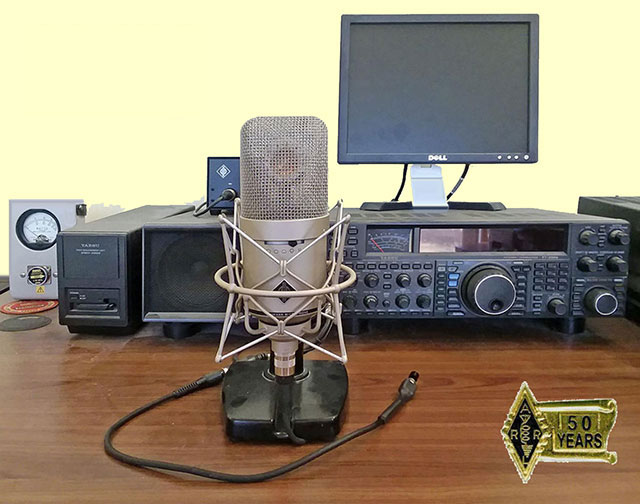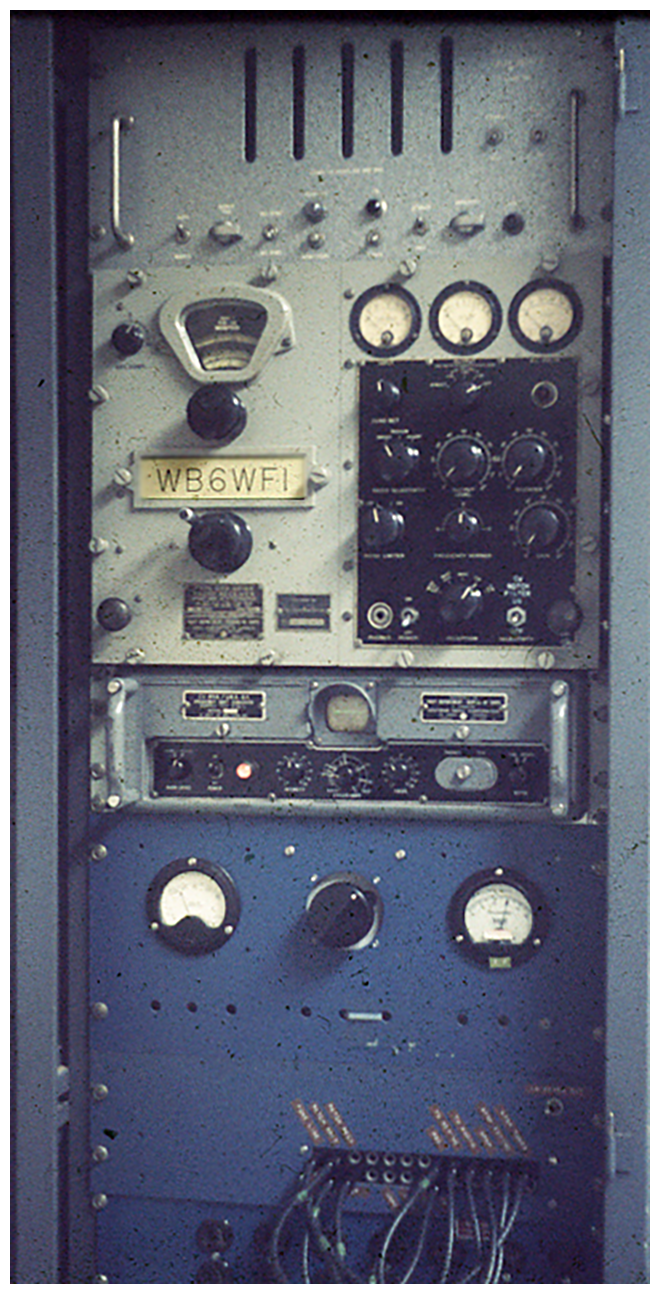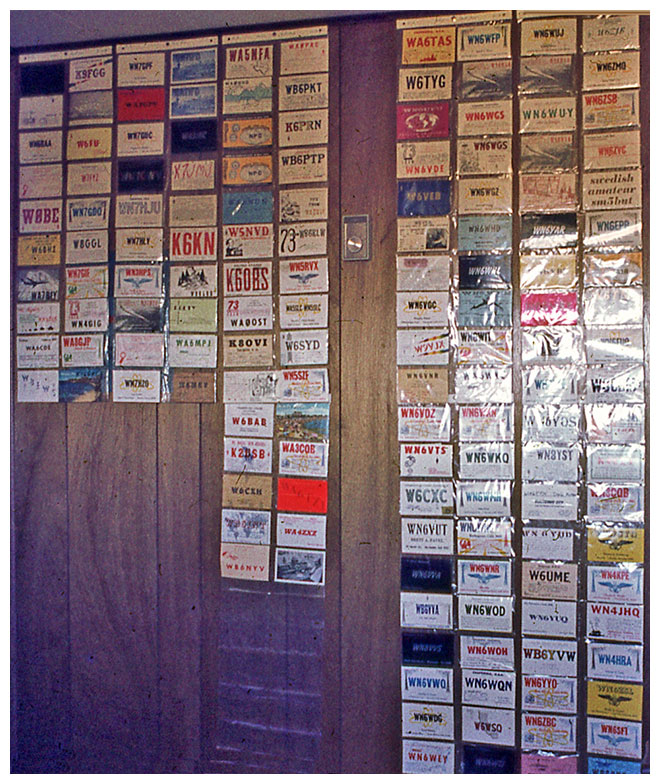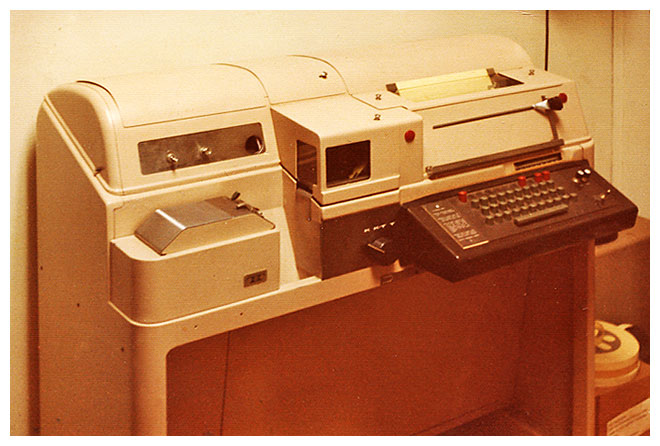



March, 1967: Concrete arrives for the Johnson Valley Ham Shack slab.
(The Tehachapi station would be established in November of 2015.)

Terry watches as his dad Richard and Stan pour the footing.

Richard and Stan trowel the mud.

Satisfied Stan surveys the scene.

Framing of the walls and joists is finished.

Richard and Stan’s dad, WA6BLK, finish the shingling.
People ask, “Why aren’t you up there nailing down shingles?”
My answer is, “Someone had to climb down and take a picture.”

The Johnson Valley (Mojave Desert) Ham Shack is ready for stucco.

Stan and Richard apply the scratch coat.

The multi-band high-frequency folded dipole is up.

Inverted V antennas for 40 and 80 meters are installed.

Coverage is continuous from 3 to 30 MHz including the WARC bands.

Bundled transmission lines carry the signals back and forth…

…through the attic…

…out of the ceiling and down the wall…

…and into the antenna selector switch.

After relocating the desert station several times, here is its last setup
before selling this property and moving to Tehachapi in 2014.

The folded dipole is ninety feet in length.

A random-length long wire antenna is stretched above the house.

Details of the random-length long-wire antenna’s design.

During 1967-68 the Novice station incorporated a U.S. Navy RBC receiver.

For a while, the US Navy RBC Receiver lived in this 19-inch equipment rack
along with a URA8-A CV89 radioteletype (RTTY) demodulator.

Stan’s 1967 homebrew transmitter uses a 6146B vacuum tube.

The Johnson Valley (Mojave Desert) operating position during 1969.

The Hallicrafters Model № SR-400 Cyclone 80-10-meter transceiver.

The beginnings of a QSL (confirmation) card collection.

A portion of the antenna farm, including the CCD 40-20-meter dipole.

The marvelous Teletype Model 28ASR (Automatic Send-Receive)
that brought me years of two-way RTTY communication.

The vhf station includes digital mode capabilities.

Various antennæ have come and gone over the years.

The snowfall of February, 1968.

A ten-meter Gizmotchy beam antenna.

Originally designed for 11 meters, we recut it for 10.

Now barely twelve feet off the ground, it continues to function well.

The two-element Yagi-Uda tri-band beam before it blew down.

On the left is an old ten-meter ground plane vertical. On the right is a
five-eighths-wave two-meter Cushcraft Ringo Ranger, a true winner.

The Sierra Madre station in 1968. (We sold this property in 2014.)

The Bighorn Mountains form an impressive backdrop.

Dixie, N6TOH and Stan, AA6SC.


Driving distance between the Johnson Valley and Tehachapi stations is 148 miles.
Completed in 2015, the Tehachapi station location is shown below.
The Johnson Valley homestead was sold during 2019.

This photo was taken in February, 2015 before the CCD antenna was installed.
Yellow lines have been added to indicate the layout of our 40-20-meter dipole.
Base of the center mast is 51 feet above the road. Height of the mast is 36 feet.
The antenna’s feedpoint is 86 feet above the road, enhancing its performance.
Observe the significant downward slope of the land to the left of the house.
Enlarge this image

February, 2017: A close friend gave me this Yaesu Series 2000, consisting
of an FT-2000 transceiver and a DMU-2000 Data Management Unit.